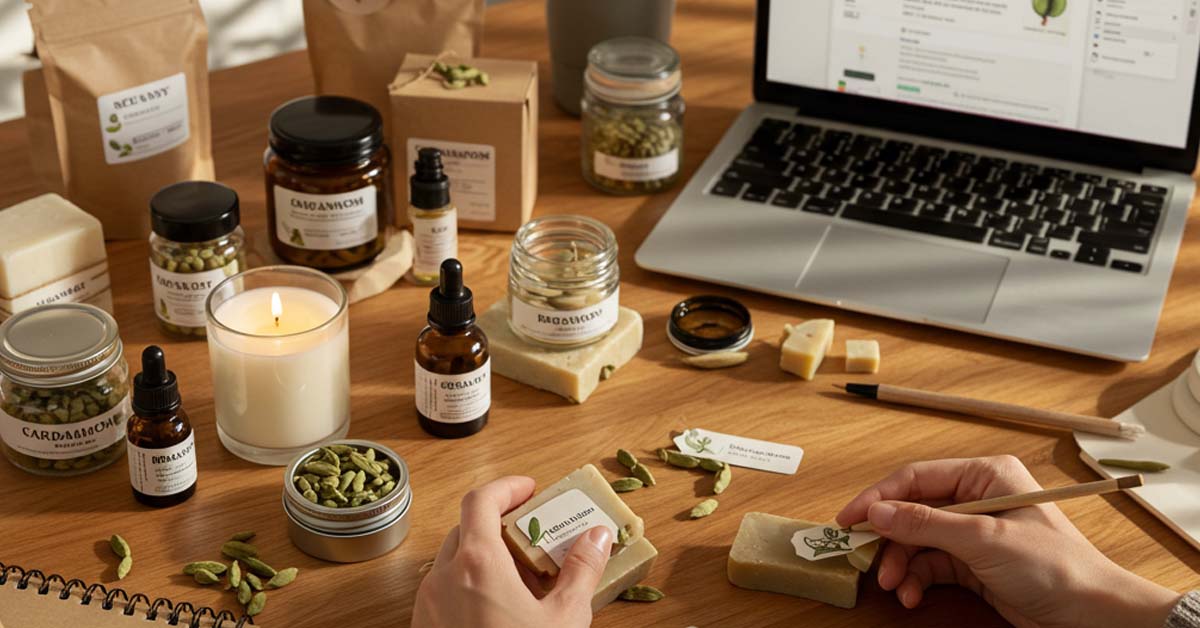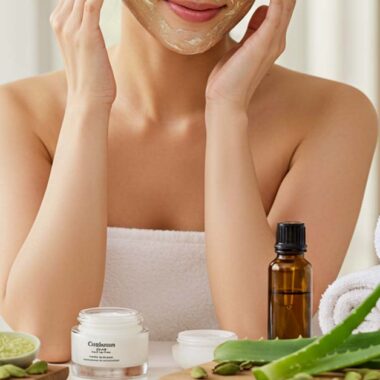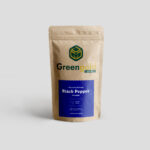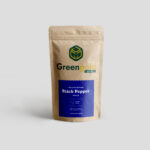Cardamom, the Queen of Spices, is a beloved ingredient used in a variety of products, ranging from culinary delights to wellness and beauty items. If you’re passionate about cardamom and want to start your own business selling cardamom-based products, you’re in the right place! In this guide, we’ll walk you through the essential steps to help you launch and grow a successful cardamom product business.
🛒 Step 1: Understand Your Product Range 🍯
Before diving into the business, you need to decide what cardamom-based products you want to offer. There are plenty of options to choose from, depending on your target audience and niche. Here are some ideas:
1. Cardamom-Infused Food Products
- Cardamom Tea: Pre-packaged cardamom tea or tea bags.
- Cardamom Honey: A delicious and aromatic twist on regular honey.
- Cardamom Coffee: Pre-ground or whole beans with cardamom infusion.
- Cardamom Powder: Ground cardamom packaged for consumers to use in cooking.
- Cardamom Syrup: A sweet syrup used in drinks or desserts.
2. Cardamom Skincare Products
- Cardamom Face Masks: Natural face masks with cardamom and other herbal ingredients.
- Cardamom Lip Balm: A moisturizing balm with the essence of cardamom.
- Cardamom Scrubs: Exfoliating scrubs for the skin.
- Cardamom Body Lotion: Luxurious body lotion with cardamom oil.
3. Cardamom Health Products
- Cardamom Capsules: For digestive health and overall wellness.
- Cardamom Essential Oil: For use in aromatherapy and massage.
4. Cardamom Spice for Cooking
- Whole Cardamom Pods: Packaged for home cooks.
- Pre-ground Cardamom: Ready for immediate use in kitchens.
Make sure to research the demand for your chosen products and decide if you want to focus on organic or conventional cardamom products.
📝 Step 2: Market Research & Target Audience 📊
To successfully sell cardamom-based products, you need to identify your target market. Who is your ideal customer? Consider factors such as:
- Demographics: Age, gender, income level, and location.
- Psychographics: Interests, lifestyle choices, and purchasing behavior.
- Niche: Are you catering to health-conscious consumers, foodies, or beauty enthusiasts?
Conducting Market Research
- Competitor Analysis: Look at other businesses selling cardamom products. What are their strengths and weaknesses? What can you do differently?
- Surveys & Polls: Conduct surveys among your target audience to understand what types of cardamom products they would be interested in.
By understanding your audience, you can tailor your products, branding, and marketing strategies accordingly.
🏭 Step 3: Sourcing Quality Cardamom 🌾
To create high-quality cardamom-based products, you’ll need a reliable supplier of cardamom. Quality matters when it comes to this premium spice. Here’s how you can source cardamom:
- Direct from Farmers: If you’re in a region where cardamom is grown (like Idukki), consider establishing direct relationships with farmers to source fresh, high-quality cardamom.
- Bulk Suppliers: If you’re looking for large quantities, you can find bulk suppliers or wholesalers of cardamom. Ensure they have good reviews and offer consistent quality.
- Organic Certification: If you’re selling organic cardamom products, make sure your supplier can provide organic certification.
You should also decide whether you’ll focus on whole pods, ground cardamom, or cardamom oil, depending on your product line.
🏷️ Step 4: Brand Your Business 💡
A strong brand is key to standing out in the marketplace. Here are the steps to create an appealing and memorable brand for your cardamom-based business:
- Name Your Business: Choose a name that reflects the quality and uniqueness of your cardamom products. Keep it short, memorable, and relevant to the spice.
- Logo & Design: Hire a designer to create a professional logo that aligns with your brand values and resonates with your audience.
- Brand Story: Share your story behind the business. Whether it’s your love for cardamom, your focus on quality, or your commitment to sustainability, a compelling narrative will engage your customers.
- Packaging: Invest in attractive and eco-friendly packaging that showcases the uniqueness of your cardamom products.
🏪 Step 5: Set Up Your Online Store or Retail Space 💻
In today’s digital world, an online presence is a must. Here’s how you can get started:
- E-commerce Website: Create a user-friendly website to sell your cardamom products. Use platforms like WooCommerce, Shopify, or Etsy.
- Marketplaces: Consider listing your products on platforms like Amazon, Flipkart, or eBay to reach a wider audience.
- Retail Space: If you’re aiming for local sales, you can set up a physical store or distribute through retailers, grocery stores, or markets that specialize in gourmet or organic products.
SEO & Marketing
Optimize your website for search engines to ensure potential customers can easily find your products. Focus on cardamom-related keywords and build an SEO-friendly blog to increase organic traffic.
📣 Step 6: Create a Marketing Strategy 💬
To successfully market your cardamom products, consider the following tactics:
- Content Marketing: Share recipes, health tips, and DIY ideas using cardamom. Create blog posts, social media content, and videos to educate your audience.
- Influencer Marketing: Partner with influencers who focus on food, wellness, or natural beauty to showcase your products.
- Social Media: Use platforms like Instagram, Facebook, and Pinterest to engage with your audience and create a community around your brand.
- Email Campaigns: Build an email list and send promotions, recipes, and product updates to your subscribers.
💼 Step 7: Pricing & Profit Margins 💸
When pricing your products, consider the cost of production, packaging, marketing, and any additional overhead. Be sure to leave room for profit while keeping your products affordable for your target audience.
- Profit Margins: Consider factors like product quality, packaging, and shipping costs. Also, think about offering product bundles or discounts for loyal customers.
- Wholesale vs. Retail: Decide whether you’ll sell your products directly to consumers or offer them at wholesale prices to retailers.
🛠️ Step 8: Legal Requirements and Certifications 📝
Ensure your business complies with local regulations. Here are a few things to consider:
- Business License: Apply for a business license and register your company.
- Health & Safety Standards: If you’re selling food or skincare products, you’ll need to adhere to local health and safety regulations.
- Organic Certification: If you’re selling organic cardamom products, get certified by relevant organic certifying agencies.
📦 Step 9: Distribution and Shipping 🚚
Determine how you’ll handle shipping and delivery. Some options include:
- Direct Shipping: Ship directly to customers through delivery services like FedEx or India Post.
- Third-Party Fulfillment: Work with a third-party logistics (3PL) provider to store and ship your products.
- Local Delivery: If your market is local, offer same-day delivery or pick-up options.
🏆 Step 10: Scale and Grow Your Business 🚀
Once you’ve successfully launched your business, focus on scaling:
- Expand Your Product Range: Add new cardamom-infused products based on customer demand.
- Increase Your Reach: Explore international markets or new sales channels.
- Customer Retention: Build loyalty programs, offer discounts for repeat customers, and encourage reviews.
💬 Conclusion: Starting Your Cardamom-Based Business 🌿
Starting a business selling cardamom-based products can be a rewarding venture, especially with the growing demand for natural and organic products. By following these steps, focusing on quality, and creating a strong brand, you can establish yourself as a trusted provider of cardamom products in the market.













